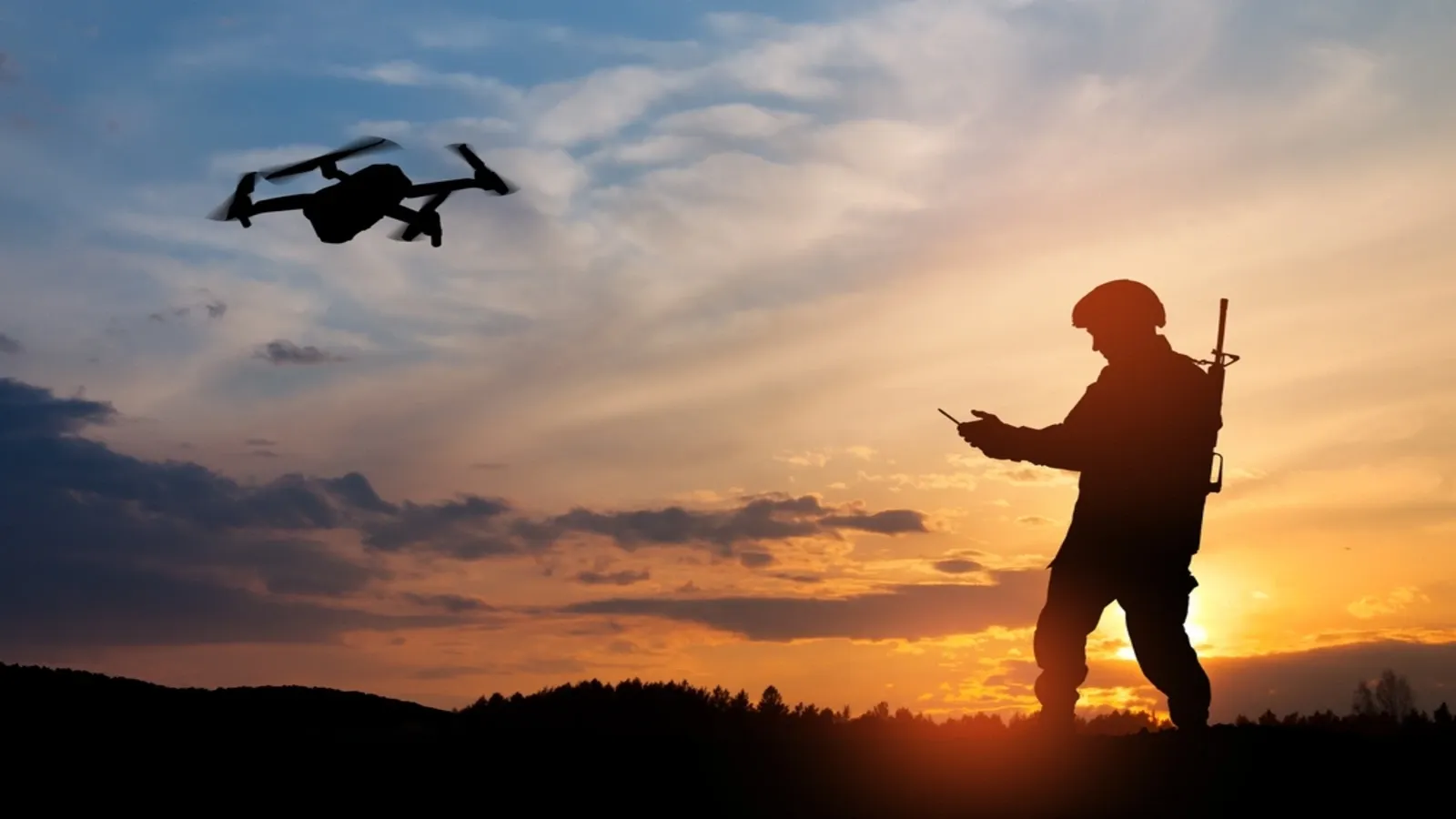Trending
The new rules of war: How technology and tactics are reshaping conflict

6 min read | Updated on July 07, 2025, 20:19 IST
SUMMARY
The nature of modern warfare is rapidly evolving. From ancient arrows to modern AI and drones, technology is rewriting the rules of engagement. Today, conflicts are defined by information power, precision targeting, aggressive deterrence and hybrid tactics. Commercial technological integration and the ambiguous "grey zones" further complicate battlefields, demanding new strategic agility from all actors.

Conflicts are defined by information power, precision targeting, aggressive deterrence and hybrid tactics | Image courtesy: Shutterstock
For as long as humans have existed, we've fought wars. But today, the way we fight is changing faster than ever before. Forget the hand-to-hand combat of centuries past; cyber warfare is a real thing in the modern era. Technology is rewriting all the old rules, transforming the way we strategise, the weapons we use and the tactics we employ.
So, how exactly are things changing on the battlefield? Let's dive in.
The technological leap
Throughout history, big leaps in technology have always changed how wars are fought. Think about it: the simple arrow gave way to the precise bullet. Horses, once a key mode of transportation, were replaced by powerful tanks. And the mighty battleship was eventually outmatched by the long-reaching power of the aircraft carrier. Each of these changes completely reshaped warfare. Today, we're in the middle of another massive shift: the incredible power of information. This isn't just about sending messages faster. It's about using data analysis, global internet connections, artificial intelligence, robots, and even new materials to change every part of war. From gathering secrets and managing supplies to hitting targets with pinpoint accuracy and playing mind games, technology is everywhere.
For instance, precision targeting is now a game-changer. In the Russia-Ukraine war, Ukraine used the High Mobility Artillery Rocket System (HIMARS) with devastating effect. These systems hit Russian command centres, supply depots and bridges from far away, even at night. This shows how they can accurately strike important targets deep behind enemy lines, crippling the enemy's ability to fight.
Similarly, in the recent Israel-Iran conflict, after Iran's missile and drone attack, Israel responded with precision strikes on Iranian nuclear sites and military facilities. It even used smaller drones and special missiles launched from inside Iranian territory to knock out defences and target key military leaders. And you've probably heard how the US uses drones armed with Hellfire missiles for hitting specific individuals or groups.
Trade as a weapon
The increasing use of trade as a weapon reflects a shift towards a more complex form of international manipulation, where economic power is directly leveraged to achieve geopolitical and security objectives.
Aggression as a deterrent
Another big change is how countries use aggression as a deterrent. This means they act tough or threaten strong retaliation to scare an opponent away from doing something they don't want. The idea is to make the other side believe the cost of their action would be too high. We've seen this with Russia's actions towards Ukraine. Before the full-scale invasion, Russia built up huge military forces on Ukraine's borders, held massive drills, and openly threatened Ukraine against joining NATO. This was meant to scare Ukraine away from closer ties with the West and to deter NATO from helping Ukraine further.
China uses a similar tactic in the South China Sea. It builds military bases on artificial islands and sends its coast guard and fishing fleets to harass other countries' ships. It also holds frequent, highly publicised military exercises near Taiwan. These aggressive moves are designed to assert China's claims and prevent Taiwan from declaring full independence, all without starting an actual war.
The blurry world of hybrid warfare
This leads us to hybrid warfare, a complicated idea because it's hard to pin down. It's about achieving military goals without using traditional force. It includes all sorts of tactics, technologies and methods that mix conventional fighting with sneaky, unconventional approaches.
This kind of fighting happens in what's called the "grey zone". It is that unclear space between war and peace. In this zone, everything is ambiguous: how international laws apply, who is doing what and whether their actions even deserve a response. This uncertainty has led to many different groups getting involved, each with their own goals. They fight using informal methods, proxy groups, fake information, cyberattacks and economic pressure.
A great example is the Israel-Hezbollah war in 2006. Hezbollah used advanced weapons alongside classic guerrilla tactics. They operated in small, hidden groups, launching quick attacks and blending in with civilians. They were also masters of information warfare, quickly sharing photos and videos from the battlefield to control the story and gain support, often outsmarting Israel in the media.
Integration of commercial technology
The war in Ukraine shows how much modern fighting relies on everyday technology, especially modified civilian drones, like those made by China's DJI. Both sides use them extensively, which means countries don't just depend on big defence companies anymore. Instead, they can quickly change existing gadgets for military use.
Humans have always adapted their methods of warfare, but the current era marks an acceleration in this evolution. As we move further into the Information Age, the battlefield is no longer just a physical ground, but a complex arena with data streams, cyber networks and the subtle manipulations of hybrid warfare. The strategic agility of nations—and non-state actors—will increasingly hinge on their ability to leverage cutting-edge technologies, while navigating the ethical and diplomatic complexities of a "grey zone".
By signing up you agree to Upstox’s Terms & Conditions
About The Author
Next Story

